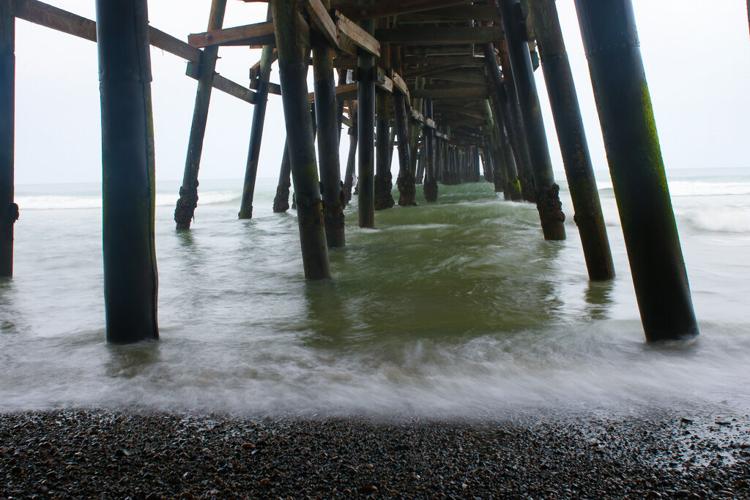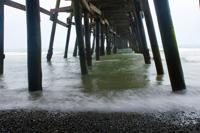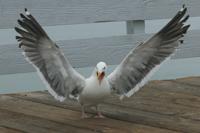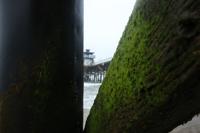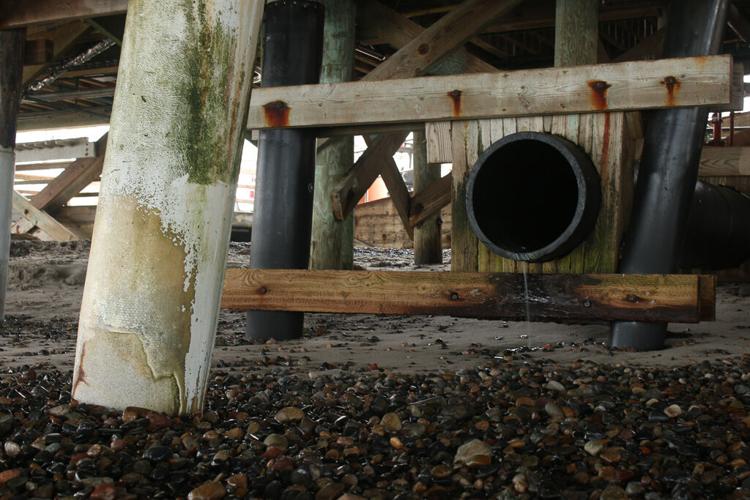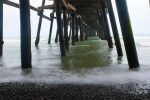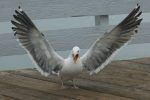By Eric Heinz
Since 2015, the city of San Clemente has had to deal with reports of unhealthy levels of bacteria in the water surrounding its iconic Pier.
Orange County Healthcare Agency has monitored the base of the Pier’s water quality since then, and now the city is putting together a stakeholder task force to address the continued excessive bacterial levels. The healthcare agency’s Beach Info page stated officials test for total coliform, fecal coliform and enterococcus, which can come from a myriad of sources. Swimmers who come into contact with these materials could be exposed to bacteria that can cause fever-inducing diseases.
Warnings are usually posted by the agency’s Beach Info alerts for 500 feet north and south of the Pier’s drainage pipe, where rainwater typically inundates.
Last year, notable nonprofit organization Heal the Bay gave the Pier a C grade in the summer during dry periods but an F for the winter and year-round testing.
“We’re trying to determine the best practice model to eliminate the bacteria exceedances or at least reduce them,” said Cynthia Mallett, the city’s environmental programs supervisor.
The microbial study will look at fecal levels near the Pier during dry and wet times to try to determine whether they are from the birds that roost in the structure or from other sources.
Mallett said the city has been patrolling the Pier to look for any polluted discharges within its watershed, as well as “some potential” groundwater seepage
“We really (think) the birds under the Pier are the source of the high levels of bacteria, so at this time it’s about the lack of bird deterrents underneath,” Mallett said.
Mallett said there was a net underneath the Pier from the end of the structure to Tower 0. When the Pier went through renovations last year, that helped deter the avian suspects.
“We want to make sure that it’s a transparent process to show how the process went forward and that the data (the city collects) is good data,” she said.

The large drainage pipe at the base of the Pier is where water samples have been taken. For the last four years, they’ve consistently registered unsafe levels of bacteria. Photo: Eric Heinz

The city of San Clemente recently approved a task force to examine the water near the Pier to see what’s causing high levels of bacteria. Photo: Eric Heinz

Green algae is commonly seen around the base of the Pier, exposed during high tides, but it is not necessarily contaminated. City officials said physical attributes of the Pier will be part of the microbial study. Photo: Eric Heinz

Pigeons and other birds may be the culprit in what’s causing the Pier’s waters to register bacterial levels unsafe to human contact. Photo: Eric Heinz

Seagulls and pigeons among other avian species may be contributing to bacteria levels that are unsafe for human contact in the nearby waters. Photo: Eric Heinz
Susan Ambrose, the chairperson of the Coastal Advisory Committee, said they’ve discussed the issue for a long time as well as the problem at Poche Beach, which was Heal the Bay’s worst offender in Southern California in 2018.
“We need to move ahead and be proactive in keeping our beaches clean and clean oceans,” Ambrose said.
Mayor Steve Swartz said he’s dealt with the issue since he was on the Beaches, Parks & Recreation Commission in 2004. He said using hawks, fake coyotes and other means to scare off the birds have been used, though stressing the Pier’s issues need to be addressed.
Costs of certain remedies were not mentioned at this meeting but will likely become available as ideas are put forth.
The city’s task force will include stakeholders from local water advocacy groups, as well as professionals who understand the nuances of microbial bacteria studies.
“In this instance, it’s not just bringing more local people for involvement; it’s bringing in experts in the field that may bring us solutions or recognize things that are going on that we haven’t been able to recognize,” Swartz said during the April 16 city council meeting.
The city council voted unanimously to form the committee.
Mallett said that invitations to apply for the task force have been sent out, and the task force is expected to be finalized in May. Water quality sampling will be conducted to help augment the microbial study.
The stakeholder committee will meet at least four times a year and will provide suggestions to the city council.
Editor’s note: Article has been updated to correct the quote of Susan Ambrose.

